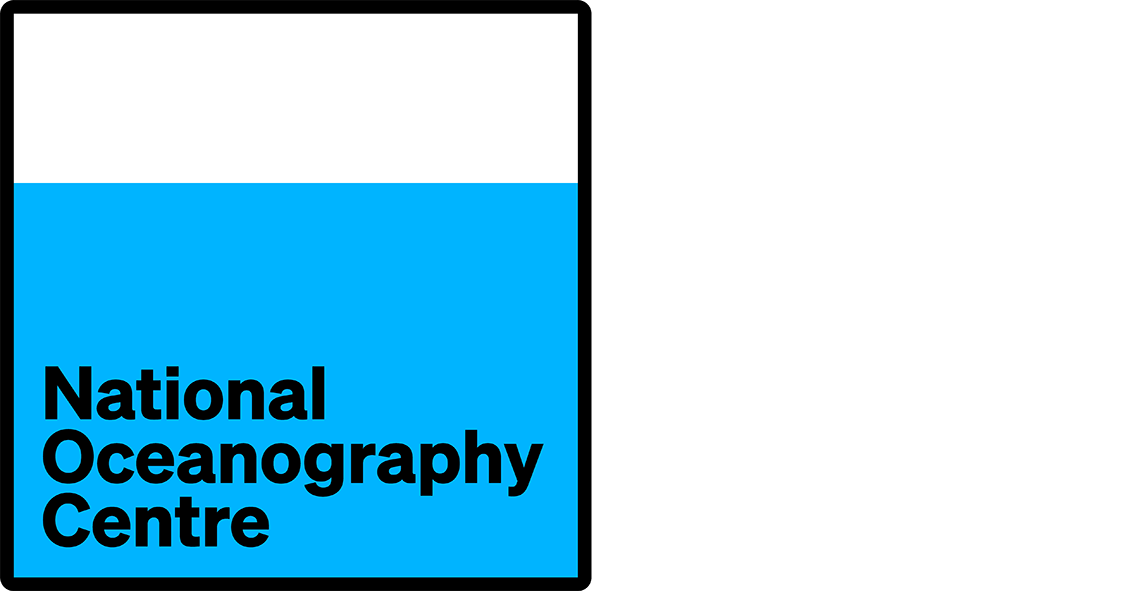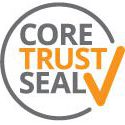Metadata Report for BODC Series Reference Number 2159232
Metadata Summary
Problem Reports
Data Access Policy
Narrative Documents
Project Information
Data Activity or Cruise Information
Fixed Station Information
BODC Quality Flags
SeaDataNet Quality Flags
Metadata Summary
Data Description |
|||||||||||||||||||||||||||||||||||||||||||||||||
|
|||||||||||||||||||||||||||||||||||||||||||||||||
Data Identifiers |
|||||||||||||||||||||||||||||||||||||||||||||||||
|
|||||||||||||||||||||||||||||||||||||||||||||||||
Time Co-ordinates(UT) |
|||||||||||||||||||||||||||||||||||||||||||||||||
|
|||||||||||||||||||||||||||||||||||||||||||||||||
Spatial Co-ordinates | |||||||||||||||||||||||||||||||||||||||||||||||||
|
|||||||||||||||||||||||||||||||||||||||||||||||||
Parameters |
|||||||||||||||||||||||||||||||||||||||||||||||||
|
|||||||||||||||||||||||||||||||||||||||||||||||||
|
|||||||||||||||||||||||||||||||||||||||||||||||||
Problem Reports
No Problem Report Found in the Database
Data Access Policy
Open Data
These data have no specific confidentiality restrictions for users. However, users must acknowledge data sources as it is not ethical to publish data without proper attribution. Any publication or other output resulting from usage of the data should include an acknowledgment.
If the Information Provider does not provide a specific attribution statement, or if you are using Information from several Information Providers and multiple attributions are not practical in your product or application, you may consider using the following:
"Contains public sector information licensed under the Open Government Licence v1.0."
Narrative Documents
RD Instruments- Ocean Surveyor 75kHz Vessel mounted ADCP.
| Long-Range Mode | ||
|---|---|---|
| Vertical Resolution Cell Size3 | Max. Range (m)1 | Precision (cm/s)2 |
| 8m | 520 - 650 | 30 |
| 16m | 560 - 700 | 17 |
| High-Precision Mode | ||
| Vertical Resolution Cell Size3 | Max. Range (m)1 | Precision (cm/s)2 |
| 8m | 310 - 430 | 12 |
| 16m | 350 - 450 | 9 |
1 Ranges at 1 to 5 knots ship speed are typical and vary with situation.
2 Single-ping standard deviation.
3 User's choice of depth cell size is not limited to the typical values specified.
Profile Parameters
- Velocity long-term accuracy (typical): ±1.0%, ±0.5cm/s
- Velocity range: -5 to 9m/s
- # of depth cells: 1 - 128
- Max ping rate: 0.7
Bottom Track
Maximum altitude (precision <2cm/s): 950m
Echo Intensity Profile
Dynamic range: 80dB
Precision: ±1.5dB
Transducer and Hardware
Beam angle: 30°
Configuration: 4-beam phased array
Communications: RS-232 or RS-422 hex-ASCII or binary output at 1200 - 115,200 baud
Output power: 1000W
Standard Sensors
Temperature (mounted on transducer)
- Range: -5° to 45°C
- Precision: ±0.1°C
- Resolution: 0.03°
Environmental
Operating temperature: -5° to 40°C (-5° to 45°C)*
Storage temperature: -30° to 50°C (-30° to 60°C)*
*later instruments have greater range.
Web Page
Further details can be found on the manufacturer's website or in the specification sheet
RAPID Cruise DY146 75kHz Shipboard ADCP data processing
Originator's Processing
The following was taken from the DY146 cruise report. For more detailed information please refer to Evans (2022). Data were collected using a Teledyne RDI Ocean Surveyor 75kHz vessel-mounted ADCP.
ADCP setup
| Variable | Narrowband mode |
|---|---|
| Number of Bins | 60 |
| Bin length (m) | 16 |
| Blanking distance (m) | 8 |
| Minimum ping time (s) | 1.8 |
| Maximum depth for bottom tracking (m) | 1000 |
| Bottom tracking | No except first day |
| Beams | 4-beam solution |
The ADCP was activated on leaving Port of Southampton (9th February 2022 10:00 GMT) and bottom tracking data was obtained on the track out the Channel. After this the ADCP was configured for narrowband water tracking mode. It remained active until 08:48 GMT on 10th February when the ship entered Spanish territorial waters. Logging was resumed around 08:30 GMT on 13th February when the ship entered international waters before stopping again around 20:00 GMT the same day. Logging resumed around 09:00 GMT on 16th February once back in international waters. Dropouts in the Seapath heading stream being used for ship velocities were noticed around 18th February, and configuration was changed to use the Posmv as position (GPS) instrument on 20th February. As a result of this the vmADCP data is contained within two files with a changeover date of 20th February. A brief power cut on 23rd February resulted in a small data gap between 17:23 GMT and 19:47 GMT in the second file. The final turn off was at 12:34 GMT on 4th March 2022.
Post-processing
The final processing of data was done using the CODAS (Common Ocean Data Access System) suite of software. The processing route can be summarised as copying the raw files, converting them into a working format, merging navigation data, deriving velocities, quality control, and conversion of data to Matlab and NetCDF files.
Data quality
Scattering layers were detected in the data and were edited out where a biasing effect of this layer was clear. In addition bad data in the bin above the bottom of the os75 record at the start of the cruise (in shallow water) was also edited out. Occasional isolated bad profiles or large discrepancies between the 75kHz vmADCP and the 150kHz vmADCP were also observed. Data was edited out when it was clear which instrument was the source of the discrepancy. For more details see Evans (2022).
References
Evans, D.G. 2022 RAPID report for research expedition DY146. 4 February - 9 March 2022, RRS Discovery. Research Expedition Report No. 76. Southampton, National Oceanography Centre, 158pp. (National Oceanography Centre Cruise Report, 76)
BODC Processing
The data were provided to BODC in two NetCDF files, one for data collected between 9th to 20th February 2022 and one for data collected between 20th February 2022 and 4th March 2022. These files were reformatted to BODC's internal NetCDF format. The following table shows the mapping of variables within the Matlab files to appropriate BODC parameter codes.
| Originator's variable | Originator's Units | BODC Parameter Code | BODC Units | Comment |
|---|---|---|---|---|
| lon | degrees east | ALONGP01 | degrees | - |
| lat | degrees north | ALATGP01 | degrees | - |
| u | m/s | LCEWAS01 | cm/s | Conversion *100 applied |
| v | m/s | LCNSAS01 | cm/s | Conversion *100 applied |
| uship | m/s | APEWGP01 | cm/s | Conversion *100 applied |
| vship | m/s | APNSGP01 | cm/s | Conversion *100 applied |
| depth | metres | DBINAA01 | metres | - |
| heading | degrees | - | - | Not transferred |
| tr_temp | degrees celsius | - | - | Not transferred |
| pg | percent | PCGDSA01 | percent | Data available upon request |
| amp | - | TNIHSBAV | counts | Data available upon request |
| time | days | AADYAA01 AAFDZZ01 | days | Conversion automatically applied during transfer |
The reformatted data were visualised using the in-house EDSERPLO software. Suspect data were marked by adding an appropriate quality control flag.
Project Information
Monitoring the Meridional Overturning Circulation at 26.5N (RAPIDMOC)
Scientific Rationale
There is a northward transport of heat throughout the Atlantic, reaching a maximum of 1.3PW (25% of the global heat flux) around 24.5°N. The heat transport is a balance of the northward flux of a warm Gulf Stream, and a southward flux of cooler thermocline and cold North Atlantic Deep Water that is known as the meridional overturning circulation (MOC). As a consequence of the MOC northwest Europe enjoys a mild climate for its latitude: however abrupt rearrangement of the Atlantic Circulation has been shown in climate models and in palaeoclimate records to be responsible for a cooling of European climate of between 5-10°C. A principal objective of the RAPID programme is the development of a pre-operational prototype system that will continuously observe the strength and structure of the MOC. An initiative has been formed to fulfill this objective and consists of three interlinked projects:
- A mooring array spanning the Atlantic at 26.5°N to measure the southward branch of the MOC (Hirschi et al., 2003 and Baehr et al., 2004).
- Additional moorings deployed in the western boundary along 26.5°N (by Prof. Bill Johns, University of Miami - project MOCHA) to resolve transport in the Deep Western Boundary Current (Bryden et al., 2005). These moorings allow surface-to-bottom density profiles along the western boundary, Mid-Atlantic Ridge, and eastern boundary to be observed. As a result, the transatlantic pressure gradient can be continuously measured.
- Monitoring of the northward branch of the MOC using submarine telephone cables in the Florida Straits (Baringer et al., 2001) led by Dr Molly Baringer (NOAA/AOML/PHOD) - Western Boundary Time Series (WBTS) project.
The UK-led monitoring array system was recovered and redeployed annually until 2008 under RAPID funding. From 2008 until 2015 the array continued to be serviced annually under RAPID-WATCH funding. From 2015 until 2021 the array was serviced under RAPID-AMOC funding. Since 2022 the servicing of the array has continued to be funded by the Natural Environment Research Council (NERC). The US-led projects are funded by the National Science Foundation (NSF) (MOCHA project) and NOAA Office of Climate Observations (WBTS project).
The array will be focussed on three regions, the Eastern Boundary (EB), the Mid Atlantic Ridge (MAR) and the Western Boundary (WB). The geographical extent of these regions are as follows:
- Eastern Boundary (EB) array defined as a box with the south-east corner at 23.5°N, 25.5°W and the north-west corner at 29.0°N, 12.0°W
- Mid Atlantic Ridge (MAR) array defined as a box with the south-east corner at 23.0°N, 52.1°W and the north-west corner at 26.5°N, 40.0°W
- Western Boundary (WB) array defined as a box with the south-east corner at 26.0°N, 77.5°W and the north-west corner at 27.5°N, 69.5°W
References
Baehr, J., Hirschi, J., Beismann, J.O. and Marotzke, J. (2004) Monitoring the meridional overturning circulation in the North Atlantic: A model-based array design study. Journal of Marine Research, Volume 62, No 3, pp 283-312.
Baringer, M.O'N. and Larsen, J.C. (2001) Sixteen years of Florida Current transport at 27N Geophysical Research Letters, Volume 28, No 16, pp3179-3182
Bryden, H.L., Johns, W.E. and Saunders, P.M. (2005) Deep Western Boundary Current East of Abaco: Mean structure and transport. Journal of Marine Research, Volume 63, No 1, pp 35-57.
Hirschi, J., Baehr, J., Marotzke J., Stark J., Cunningham S.A. and Beismann J.O. (2003) A monitoring design for the Atlantic meridional overturning circulation. Geophysical Research Letters, Volume 30, No 7, article number 1413 (DOI 10.1029/2002GL016776)
Data Activity or Cruise Information
Cruise
| Cruise Name | DY146 |
| Departure Date | 2022-02-09 |
| Arrival Date | 2022-03-09 |
| Principal Scientist(s) | Dafydd G Evans (National Oceanography Centre, Southampton) |
| Ship | RRS Discovery |
Complete Cruise Metadata Report is available here
Fixed Station Information
No Fixed Station Information held for the Series
BODC Quality Control Flags
The following single character qualifying flags may be associated with one or more individual parameters with a data cycle:
| Flag | Description |
|---|---|
| Blank | Unqualified |
| < | Below detection limit |
| > | In excess of quoted value |
| A | Taxonomic flag for affinis (aff.) |
| B | Beginning of CTD Down/Up Cast |
| C | Taxonomic flag for confer (cf.) |
| D | Thermometric depth |
| E | End of CTD Down/Up Cast |
| G | Non-taxonomic biological characteristic uncertainty |
| H | Extrapolated value |
| I | Taxonomic flag for single species (sp.) |
| K | Improbable value - unknown quality control source |
| L | Improbable value - originator's quality control |
| M | Improbable value - BODC quality control |
| N | Null value |
| O | Improbable value - user quality control |
| P | Trace/calm |
| Q | Indeterminate |
| R | Replacement value |
| S | Estimated value |
| T | Interpolated value |
| U | Uncalibrated |
| W | Control value |
| X | Excessive difference |
SeaDataNet Quality Control Flags
The following single character qualifying flags may be associated with one or more individual parameters with a data cycle:
| Flag | Description |
|---|---|
| 0 | no quality control |
| 1 | good value |
| 2 | probably good value |
| 3 | probably bad value |
| 4 | bad value |
| 5 | changed value |
| 6 | value below detection |
| 7 | value in excess |
| 8 | interpolated value |
| 9 | missing value |
| A | value phenomenon uncertain |
| B | nominal value |
| Q | value below limit of quantification |


